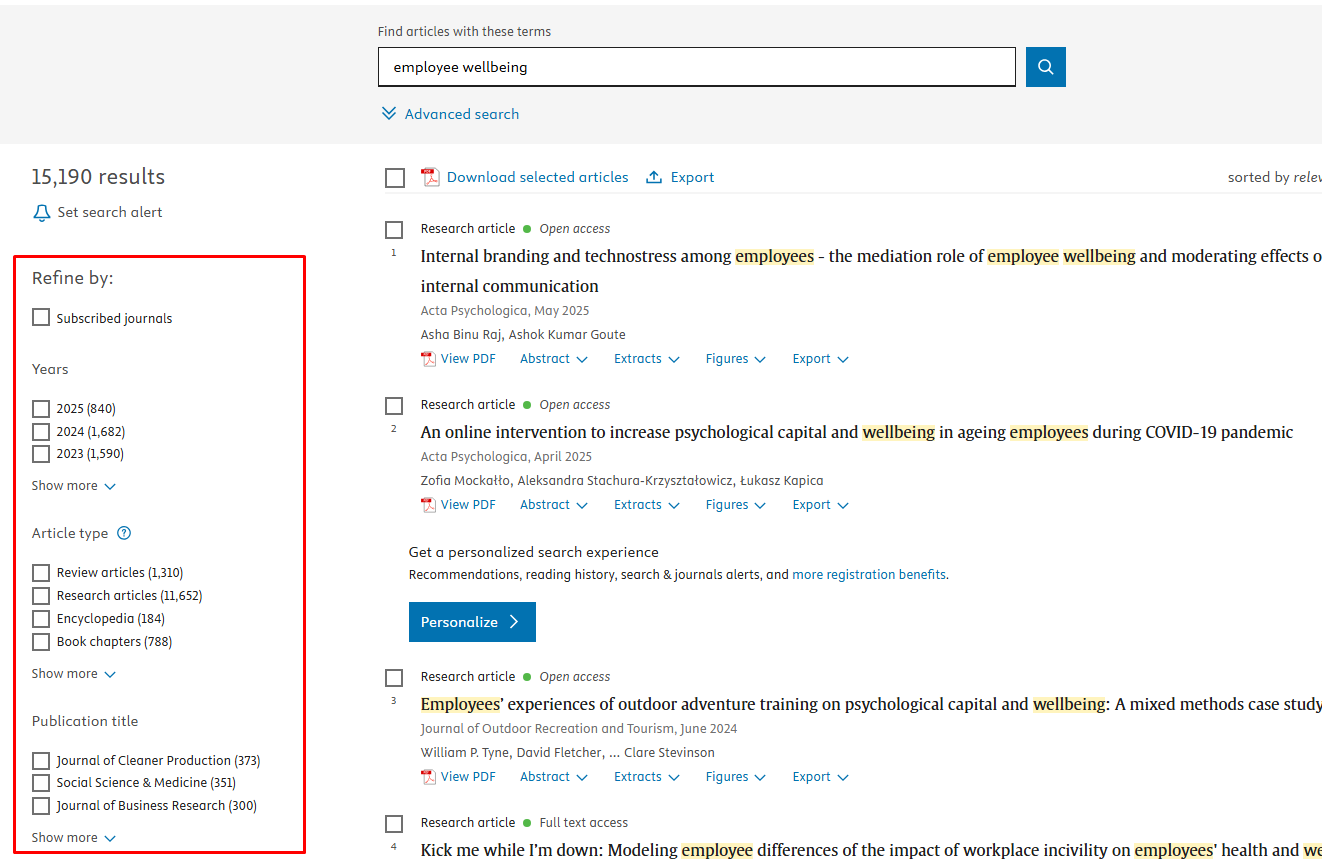ACADEMISC INFORMATION SEARCH TIPS
Description: Learn how to effectively search for academic materials using Boolean operators, database filters, and reliable sources. This section includes guides and videos on how to refine your search strategies and avoid misinformation.
There are six key techniques to make your search effective:
1. Broad and Narrow Searches
Widen or narrow your search results by choosing general or detailed terms.
A broad search gets more results but may include irrelevant ones. A narrow search gives fewer, more targeted results.
Examples:
- Broad Search: education;
- Narrow Search: STEM education in primary schools in Uzbekistan.
2. Combining Search Words with Boolean Operators (AND, OR, NOT)
Combine search words using AND, OR, or NOT to help you find more helpful information.
The Boolean operators can be used in a simple step by clicking on
Advanced search |
button in any database.

The operator AND allows you to narrow down or refine the search results that you want to find. For example, business management AND leadership AND styles bring back results that include all search terms and help you narrow your search results.

The operator OR allows you to broaden your search results. A search like business management OR leadership OR styles brings up content that includes one term, the other, or both.

The NOT operator (or a minus sign “-” in Google, placed right before a word with no space) lets you remove certain words from your search. For example, business NOT management NOT styles, will show results with the word business but exclude anything that mentions management and styles.

You can watch a brief instructional video on using Boolean operators effectively for your research.
3. Keyword Grouping
Break your search into keyword groups, each with its synonyms or keywords. It helps structure complex searches and improve results.
- Keyword Group 1: teenagers OR youth
- Keyword Group 2: mental health OR anxiety OR depression
- Keyword Group 3: social media OR Instagram OR TikTok
Then combine:
(teenagers OR youth) AND (mental health OR anxiety OR depression) AND (social media OR Instagram OR TikTok).
4. Searching for Part of Words (Truncation)
Using a symbol * to find all forms of a word. It captures plurals, different tenses, or variations in spelling.
Examples:
- educat* finds educate, education, educator, educational, etc.
- globali* finds globalisation and globalization
Note: Check the database’s help section for the correct truncation symbol ( *, ?, #, etc.).

5. Searching for Phrases (Quotation Marks)
Putting quotation marks around multiple words to search for an exact phrase. It avoids irrelevant results where words appear separately.
Examples:
- "climate change" finds only that exact phrase.
- "social media addiction" is better than searching the three words separately.
6. Simple and Advanced Search Forms
Simple search: One box for keywords (like Google).
- Advanced search: Multiple boxes, filters, and options. Advanced forms give more control for precise results.
- Use advanced search to set specific fields (e.g., title, author).
- Use filters for date limits, resource types (articles, books), or subject categories.

7. Improving Your Search
Adjusting your search strategy when results are too few, too many, or off-topic. Efficient searching saves time and yields higher-quality sources.
Remove or replace vague words.
Add more keywords to narrow results.
Remove or replace vague words.
Use filters (e.g., publication date, peer-reviewed).
Try synonyms: instead of "job stress", try "workplace pressure".
